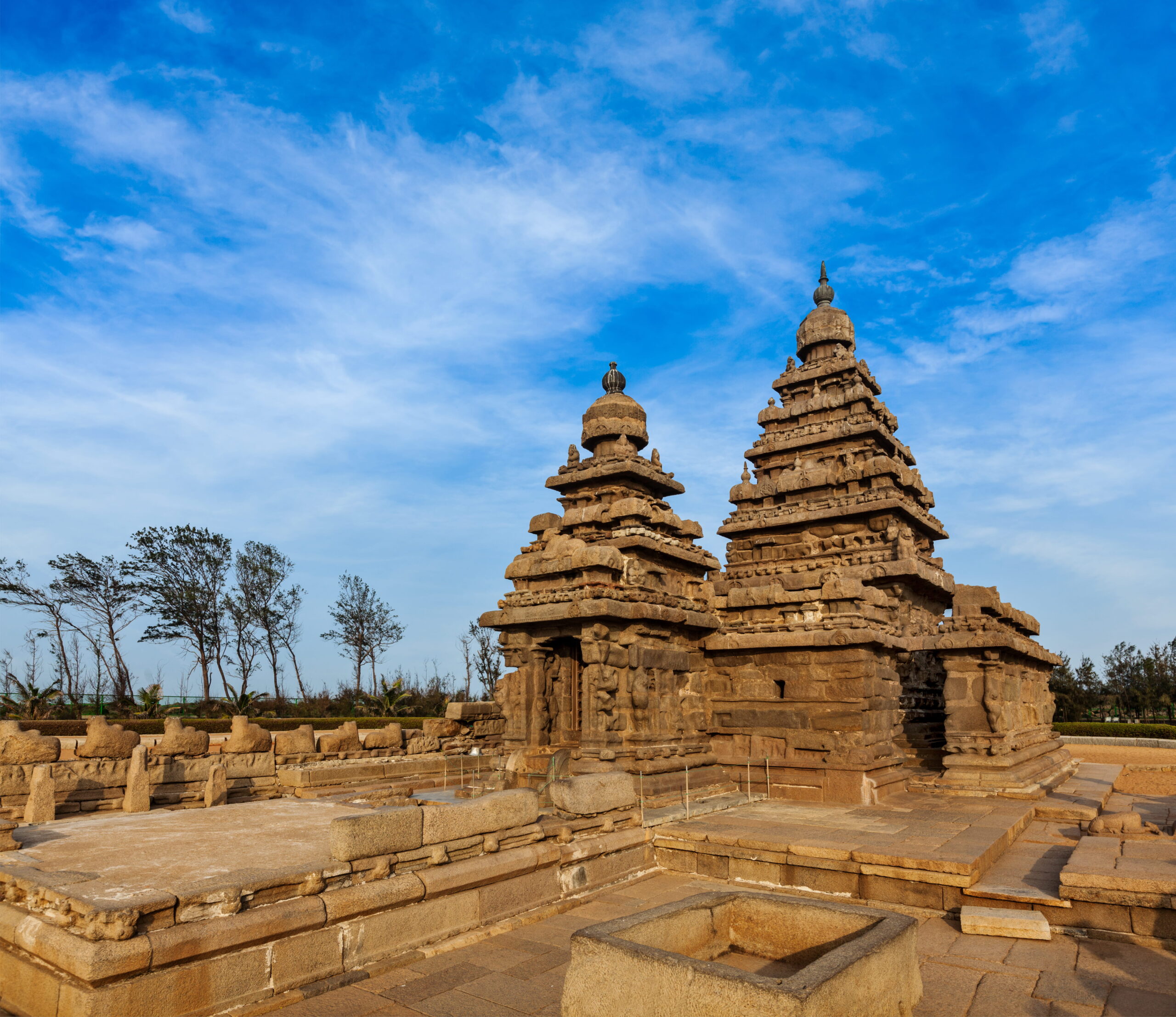Have you ever been mesmerized by a temple that stands tall by the sea, with waves gently caressing its ancient stones? Nestled along the Bay of Bengal in Tamil Nadu, the Shore Temple of Mahabalipuram is a sight to behold. This architectural marvel, dating back to the 7th century, not only showcases the artistic prowess of the Pallava dynasty but also tells tales of devotion, history, and resilience.
Shore Temple: A Canvas of Sea and Stone
The Shore Temple History
The Shore Temple, known locally as Alaivay-k-kovil, was constructed under the patronage of Pallava king Narasimhavarman II Rajasimha. Ascending the throne around 700 C.E., he ruled for about twenty years, during which this magnificent temple complex came to life. The town of Mamallapuram, also called Mahabalipuram, was a bustling port and a hub of artistic activity under the Pallavas. This temple, with its three distinct shrines, reflects the rich history and spiritual depth of the era.
The Pallava Influence on Mamallapuram
Under the rule of Narasimhavarman I, also known as Mamalla or “great warrior,” Mamallapuram flourished as a center for rock-cut monuments and sculptures. His legacy continued with the construction of the Shore Temple, which stands as a symbol of the Pallava dynasty’s artistic and architectural zenith.
Shore Temple Architecture: A Blend of Dravidian Brilliance
A Fusion of Styles
Indian temple architecture is broadly classified into two styles: Nagara (North Indian) and Dravidian (South Indian). The Shore Temple embodies the Dravidian style, with its pyramidal towers (vimana) and intricate carvings. It uniquely combines rock-cut and free-standing structural elements, standing on a naturally occurring granite boulder.
The Three Shrines
The complex includes two shrines dedicated to Shiva and one to Vishnu, the latter being the oldest and smallest. The large Shiva shrine, with its square plan and pillared porch (mandapa), houses a lingam (aniconic representation of Shiva). The smaller Shiva shrine, similar in structure but facing west, also originally contained a lingam. The Vishnu shrine, situated between the two Shiva shrines, features a reclining image of Vishnu, a common motif in Indian art.
Shore Temple Built by Nature and Craftsmanship
The Natural and the Artistic
The temple’s superstructure, with its octagonal neck (griva) and round finial, is a testament to the Pallavas’ architectural ingenuity. The outer walls of the temple, adorned with carvings of deities and mythological scenes, have withstood centuries of wind and sea erosion, much like the naturally sculpted boulders along the coast.
The Sacred Guardians
Guardians of the temple, known as dvarapalas, stand at the western gateway, welcoming visitors and marking the site as sacred. The outer enclosure walls, decorated with rows of seated bulls (Nandi), further emphasize the temple’s connection to Shiva.
A Journey Through Time: Visiting the Shore Temple
Preservation and Heritage
Despite the corrosive effects of the sea, the Shore Temple remains remarkably preserved, a testament to the skills of Pallava artisans. This site, along with other monuments in Mamallapuram, is part of the UNESCO World Heritage Site known as the Group of Monuments at Mahabalipuram, inscribed in 1984.
The Shore Temple Today
Today, the Shore Temple is not just an architectural wonder but also a beacon of the Pallava dynasty’s cultural and economic strength. Legend has it that sailors once used the temple’s towering spires to navigate their way to the prosperous port of Mahabalipuram. This blend of spiritual significance and practical utility underscores the temple’s timeless appeal.
The Eternal Charm of the Shore Temple
The Shore Temple of Mahabalipuram is more than a historical monument; it’s a living canvas of sea, stone, and human devotion. As you stand by its ancient walls, with the Bay of Bengal stretching out before you, it’s easy to feel transported back to a time of great warriors and divine artistry. No trip to Tamil Nadu is complete without experiencing this breathtaking blend of history and architecture. So, next time you’re in the area, don’t miss the chance to witness the Shore Temple’s majestic beauty firsthand.
FAQs
1. Who built the Shore Temple? The Shore Temple was built by the Pallava king Narasimhavarman II Rajasimha around 700 C.E.
2. What architectural style does the Shore Temple represent? The Shore Temple is an example of Dravidian architecture, characterized by its pyramidal towers and intricate carvings.
3. Why is the Shore Temple significant? The Shore Temple is significant for its historical, architectural, and cultural value. It is part of the UNESCO World Heritage Site in Mahabalipuram.
4. How many shrines are there in the Shore Temple complex? There are three shrines in the Shore Temple complex: two dedicated to Shiva and one to Vishnu.
5. What is unique about the Shore Temple’s construction? The Shore Temple uniquely combines rock-cut and free-standing structural elements, showcasing the Pallava dynasty’s architectural brilliance.



